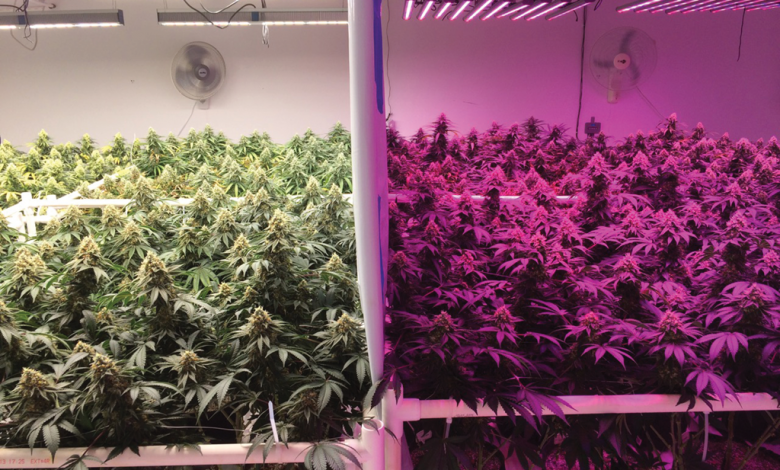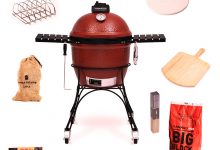Make the Most of Your LED’s – 5 Tips For LED Grow Lights For Autoflowering

You may not be familiar with some of the unique qualities of LED lighting if you’re new to growing cannabis plants inside or just new to growing cannabis plants with LED plant lights. When buying LED horticultural lights for your cannabis grow, keep the following points in mind.
Factors to Consider When Purchasing LED Grow Lights
There is no particular order in which the factors are mentioned. Given your individual growth condition, only you can determine which one is most significant to you.
Theoretical Wattage vs. Real Wattage
Most LED lights have two different wattage figures, as you may have seen. The potential wattage is one, and the actual wattage is the other. The potential wattage is the maximum wattage that the light could produce if all of the LED chips were turned on. A lamp with 200 3w LEDs, for example, has a potential wattage of 600.
LED chips, on the other hand, are never used at full power. This would drastically reduce their lifespan. Typically, they are operated at 50 to 60 per cent of their maximum capacity. This is the actual wattage of the lamp and the quantity of electricity it will use.
The power demand of the 600 watts LED grow light from the previous example would most likely be 300 to 400 watts. And, especially if it’s a Chinese brand, lights labelled as 300w don’t have a power draw anywhere near that high (they tend to exaggerate a lot).
Spectrum of Light
LEDs of various hues are used in the majority of indoor horticulture LED lights. The majority of the lights will be red and blue in colour, with some white LEDs, as well as infrared and ultraviolet LEDs, used in the better lights.
This colour combination provides all of the light that plants, including cannabis, require at each stage of development: cloning, veg, and bloom. It’s known as full-spectrum light, and it’s essentially what you’re looking for. From Best VA to Phlizon, all of the aforementioned fixtures provide some variation in this light spectrum.
There are a few exceptions to this rule. If you’re primarily interested in growing clones or veg plants, a light with predominantly blue LEDs might be worth looking into. You’ll want a light with predominantly red LEDs if you’re searching for a light to augment your existing setup and give your plants a boost during the flowering stage.
Finally, I’d like to bring up all-white LED lighting. These lights solely employ white LEDs, giving them a spectrum that is close to that of natural sunlight (which is also a mix of the HPS and metal halide spectra). White light proponents argue that it is best for plants because it provides them with the light they are accustomed to from the sun.
Spectrum
The indoor cannabis market as a whole is increasingly going toward the white light. As a result, white LED grow light fixtures are becoming more widespread on the market.
White light is also effective for growing and flowering plants. However, it contains a lot of light in the yellow and green spectrums, which plants don’t use very much during photosynthesis. As a result, it’s a waste, right?
Manufacturers (and admirers) of fixtures with predominantly red and blue LED lights have made this case. These are said to be more efficient because you aren’t wasting any of the electricity you paid for by producing light that plants don’t use.
Plants, on the other hand, crave that light. They don’t desire as much of it as they do of red and blue wavelength light, but they still want it. That’s why today’s best-selling LED grow lights for autoflowering all use white LEDs. And many of them use primarily white LED lighting.
Intensity of light
The most generally used metric of intensity for LED lights is PAR (technically, it is PPFD and not PAR, but most still refer to it as PAR). It is used to measure the amount of light in the wavelengths that plants use for photosynthesis. The lumen output is listed by certain brands, although it isn’t very relevant for grow lights.
Some manufacturers provide PAR values for their indoor plant lights, while others do not. Those that do frequently simply provide a single value, which doesn’t tell you much about how effective it is for vegetative growth, let alone flowering.
Under the light, that value was taken dead centre. A high value indicates a strong light source in the centre of the coverage area, but it says nothing about the brightness of the light on the margins.
Manufacturers should, ideally, provide a PAR footprint that displays PAR readings across the coverage region. However, most don’t, therefore you’ll have to rely on third-party testing, such as those conducted by review sites, for this information. Lumen output might be useful for white LED lights. For others, it is largely ineffective.
Area of Coverage
This is the maximum area that a grow lamp can cover while still providing sufficient light for the plants in that location. Plants require more light throughout their flowering stage of development, so you’ll need to place the light fixtures closer to the canopy. This raises the intensity while lowering the coverage area.
This is why LED lights for flowering have a smaller coverage area than LED lights for vegging. Unless you solely plan to veg with your light, ensure the space provided by the manufacturer is for flowering
System of Cooling
Although the greatest LED grow lights create significantly less heat than HID bulbs, powerful LED diodes still generate enough heat to require cooling. Heat sinks and internal fans are required for any larger LED fixture to limit the quantity of heat output and to disperse any remaining heat.
You should make sure that the cooling fans and heat sinks on an LED light are suitable for the number and strength of LEDs it includes. If it isn’t, the LED chips’ life duration significantly reduces, and they will get significantly less efficient.
Another factor to think about is noise. Because fans may produce a lot of noise, fixtures with several fans will be significantly noisier than you might expect.
When you combine their loudness with that of oscillating fans and exhaust vans for your tent, the result can be quite loud. Consider a game with fewer, or perhaps no, fans if this is a concern.
Click Here For Detailed Review



